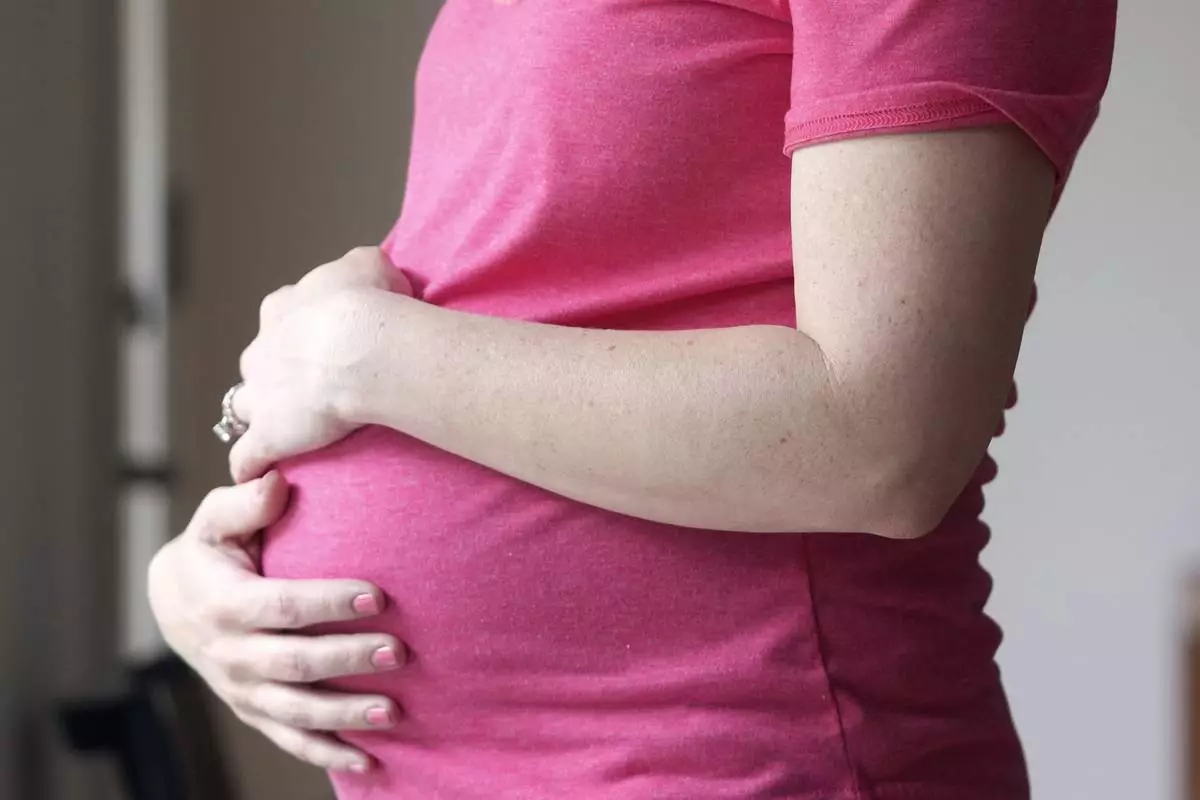Joy Harjo, the first Native American to be named U.S. poet laureate, has been ready for a long time.
"I've been an unofficial poetry ambassador — on the road for poetry for years," the 68-year-old Harjo wrote in a recent email to The Associated Press. "I've often been the only poet or Native poet-person that many have seen/met/heard. I've introduced many poetry audiences to Native poetry and audiences not expecting poetry to be poetry."
Her appointment was announced Wednesday by Librarian of Congress Carla Hayden, who said in a statement that Harjo helped tell an "American story" of traditions both lost and maintained, of "reckoning and myth-making." Harjo's term is for one year and she succeeds Tracy K. Smith, who served two terms. The position is officially called "Poet Laureate Consultant in Poetry," with a $35,000 stipend. Harjo will have few specific responsibilities, but other laureates have launched initiatives, most recently Smith's tour of rural communities around the country.
"I don't have a defined project right now, but I want to bring the contribution of poetry of the tribal nations to the forefront and include it in the discussion of poetry," says Harjo, an enrolled member of the Muscogee Creek Nation and a native of Tulsa, Oklahoma. "This country is in need of deep healing. We're in a transformational moment in national history and earth history, so whichever way we move is going to absolutely define us."
She is known for such collections as "The Woman Who Fell From the Sky" and "In Mad Love and War" and for a forceful, intimate style that draws upon the natural and spiritual world. Her previous honors include the PEN Open Book Award and the Wallace Stevens Award for lifetime achievement. Earlier this year, she was awarded the Jackson Prize, given by Poets & Writers, for a poet of merit who deserves more attention.
Harjo is currently editing an anthology of Native poets, and a new book of her own poems, "An American Sunrise," comes out in August (her publisher, W.W. Norton, moved it up from its planned September release). She also has a background in painting and dance, and is an impassioned saxophone player who has recorded several albums. In a 2017 blog post that is also part of her poem "Rabbit Invents the Saxophone," she called the instrument "so human," writing that "Its tendency is to be rowdy, edgy, talk too loud, bump into people, say the wrong words at the wrong time.
"But then, you take a breath, all the way from the center of the earth and blow. All that heartache is forgiven."
The poet laureate is not a political position. Harjo makes clear her disdain for many office seekers, however, in her poem "For Those Who Would Govern." She also has expressed her views on President Trump. In 2016, she linked to a Newsweek article about then-candidate Trump's overseas business connections and tweeted, "Donald Trump's foreign ties may conflict with U.S. national security interests." Last summer, she linked to a New York magazine article about Trump and Russia, and tweeted: "What If Trump Has Been a Russian Asset Since 1987?"
The head of the Library of Congress' poetry and literature center, Robert Casper, told the AP that laureates are encouraged to focus on "poems and the way they work," including politically. During her interview, Harjo declined to talk about Trump directly, and said instead that "everything is political."
"I began writing poetry because I didn't hear Native women's voices in the discussions of policy, of how we were going to move forward in a way that is respectful and honors those basic human laws that are common to all people, like treating all life respectfully, honoring your ancestors, this earth," she said.
She cites her poem "Rabbit is Up To Tricks" as an expression of political thought, but in a timeless way. Her poem tells of a trickster Rabbit who has become lonely, and so forms a man out of clay and teaches him to steal. The clay man learns too well, stealing animals, food and another man's wife. He will move on to gold and land and control of the world.
And Rabbit had no place to play.
Rabbit's trick had backfired.
Rabbit tried to call the clay man back,
but when the clay man wouldn't listen
Rabbit realized he'd made a clay man with no ears.
NEW YORK (AP) — U.S. births fell last year, resuming a long national slide.
A little under 3.6 million babies were born in 2023, according to provisional statistics released Thursday by the Centers for Disease Control and Prevention. That's about 76,000 fewer than the year before and the lowest one-year tally since 1979.
U.S. births were slipping for more than a decade before COVID-19 hit, then dropped 4% from 2019 to 2020. They ticked up for two straight years after that, an increase experts attributed, in part, to pregnancies that couples had put off amid the pandemic's early days.
But “the 2023 numbers seem to indicate that bump is over and we're back to the trends we were in before,” said Nicholas Mark, a University of Wisconsin researcher who studies how social policy and other factors influence health and fertility.
Birth rates have long been falling for teenagers and younger women, but rising for women in their 30s and 40s — a reflection of women pursuing education and careers before trying to start families, experts say. But last year, birth rates fell for all women younger than 40, and were flat for women in their 40s.
Mark called that development surprising and said “there's some evidence that not just postponement is going on.”
Rates fell across almost all racial and ethnic groups.
The numbers released Thursday are based on more than 99.9% of the birth certificates filed in 2023, but they are provisional and the final birth count can change as they are finalized. For example, the provisional 2022 birth count appeared to show a dip, but ended up being higher than 2021's tally when the analysis was completed.
There could be an adjustment to the 2023 data, but it won't be enough to erase the “sizeable” decline seen in the provisional numbers, said the CDC's Brady Hamilton, the new report's first author.
Experts have wondered how births might be affected by the June 2022 U.S. Supreme Court decision that allowed states to ban or restrict abortion. Experts estimate that nearly half of pregnancies are unintended, so limits to abortion access could affect the number of births.
The new report indicates that the decision didn't lead to a national increase in births, but the researchers didn't analyze birth trends in individual states or dissect data among all demographic groups.
The new data does raise the possibility of an impact on teens. The U.S. teen birth rate has been falling decades, but the decline has been less dramatic in recent years, and the drop seems to have stopped for teen girls ages 15 to 17.
“That could be Dobbs,” said Dr. John Santelli, a Columbia University professor of population and family health and pediatrics. Or it could be related to changes in sex education or access to contraception, he added.
Whatever the case, the flattening of birth rates for high school students is worrisome and indicates that “whatever we're doing for kids in middle and high school is faltering,” Santelli said.
More findings from the report:
—From 2022 to 2023, the provisional number of births fell 5% for American Indian and Alaska Native women, 4% for Black women, 3% for white women and 2% for Asian American women. Births rose 1% for Hispanic women.
—The percentage of babies born preterm held about steady.
—The cesarean section birth rate rose again, to 32.4% of births. Some experts worry that C-sections are done more often than medically necessary.
—The U.S. was once among only a few developed countries with a fertility rate that ensured each generation had enough children to replace itself — about 2.1 kids per woman. But it’s been sliding, and in 2023 dropped to about 1.6, the lowest rate on record.
Surveys suggest many U.S. couples would prefer to have two or more kids but see housing, job security and the cost of child care as significant obstacles to having more children.
“There's something getting in the way of them being able to achieve those goals,” Mark said.
The Associated Press Health and Science Department receives support from the Howard Hughes Medical Institute’s Science and Educational Media Group. The AP is solely responsible for all content.

FILE - A pregnant woman stands for a portrait in Dallas, Thursday, May 18, 2023. According to provisional statistics for 2023 released by the Centers for Disease Control and Prevention on Thursday, April 25, 2024, U.S. births fell last year, in a substantial drop marking an apparent end to pandemic-related fluctuations and a return to a long-standing national decline. A little under 3.6 million babies were born in the U.S. last year, about 76,000 fewer than the year before. (AP Photo/LM Otero, File)










